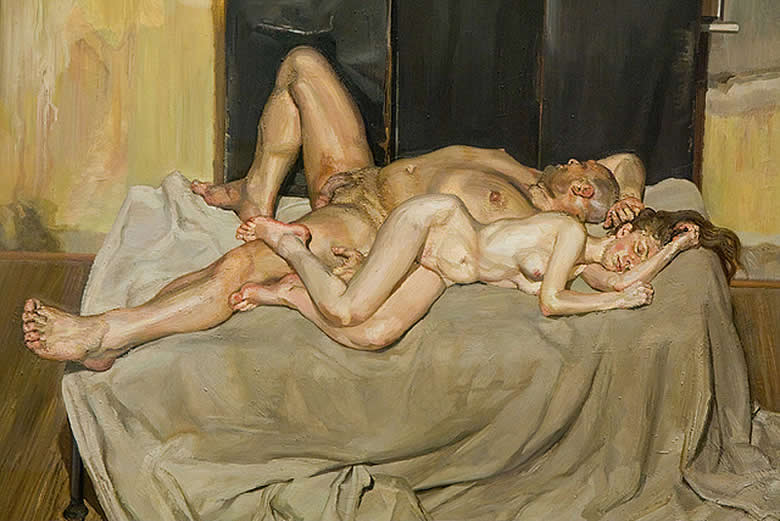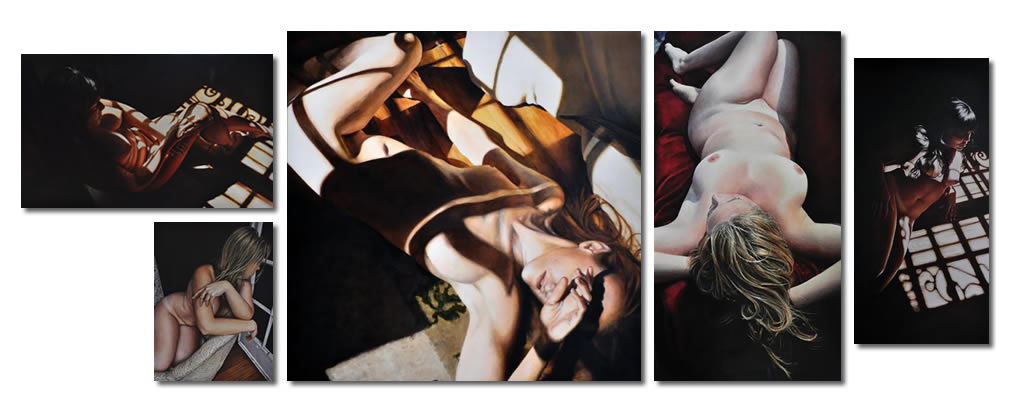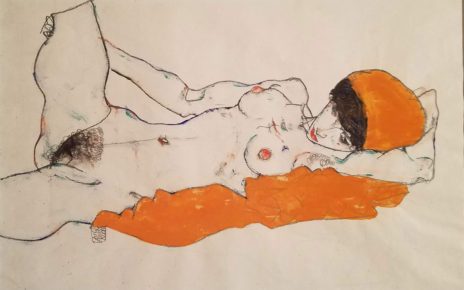The Women of the Sylvia Sleigh Collection
@ Rowan University
Rowan University Art Gallery
August 29–October 1, 2011
With a hurricane and floodwaters slashing the State of New Jersey, it’s good to see a flood of a different and most enjoyable kind lining the gallery walls of Rowan University in Glassboro, New Jersey. Currently the university is hosting an extensive exhibition of works from the collection of late artist and collector Sylvia Sleigh (1916 – 2010). Presenting over sixty paintings, works on paper and mixed media in an overwhelming array of styles and sizes it is a dizzying outpouring of creativity.
Many times as an artist I’ve told myself that if I could, I would collect this artist or that one. For Sylvia Sleigh being of modest means was not an obstacle to making an acquisition, for there was a mutual respect between those she collected and herself. There was always something to be bartered or a favor to be returned. She was a strong proponent of feminism, and as such the focus of her collection was on what women were producing. Over time she acquired almost one hundred artworks by female artists.
Certain pieces taking the mantle of self-professed male dominance away from men and those in positions of authority. In a rather iconic work by Cynthia Mailman titled ‘Study for God’ a young woman filled with über confidence as befitting such a deity, hands on hips looking down at the viewer in stern appraisal. In case there was any doubt of God’s gender her robe is parted to reveal the true ‘origin of the world’, sexualizing in a matter of fact fashion who wears, if not the pants around here, then certainly the robe.
Sleigh herself took the mantle of authorship as a woman observing and painting the male nude, gaining a bit of notoriety through the 1970’s in the process. Although not highly realistic, her portrayal of men such as actor Sean Pratt and others went against the contemporary art world grain in two obvious ways; first the representation of the figure was still considered a throw back not worthy of high brow contemplation and then there is the fact it was of a male.
A large, monumental work of Sleigh’s from 1976 titled ‘Lilith’ tries to reconcile the divide between men and women as equals, with a woman’s image superimposed on a male’s image in an effort to merge the two. The biblical story of Lilith for those unfamiliar was that she was created at the same time as Adam, and none of that rib bone from his side crap. Being his equal was something a growing patriarchal religious system was far from tolerating, lest the authorities send the wrong message to women Lilith was condemned to become a demon wandering the ether forever.
The modern incarnation of the tale has Lilith reclaiming her elevated spot and is worn as a feminist badge of honor in the struggle for equality. Refraining from the bitterness of such a lost privileged spot though, Sleigh paints the two on a background of lushly painted flowers suggesting a more harmonious relationship between the sexes.
Indeed her marriage to the art critic Lawrence Alloway (1926–1990) was a strong union of mutual respect and interests, although due to his reputation as a respected critic, Alloway was concerned that a conflict of interest could be inferred from acquiring some of the same artists he and Sylvia championed, so the collection grew slowly and only blossomed in full after his death. Not content to simply collect and, Sleigh curated exhibits of the artists she admired gaining much admiration in the process. A major show held at the Soho 20 Gallery in 1999 where the work of fifty four women was on view proved to be a watershed moment.
The various works on view at Rowan University are meant to be a reflection of the myriad ways these women saw themselves culturally and their place in art history. From Medusa, the woman wronged by the fates as portrayed in the painting ‘Perseus and Medusa’ by Audrey Ushenko, to the way Vernita Nemec has portrayed herself in a cast of spent checks defined as the ultimate consumer.
With the donation of this expansive collection to the universities’ gallery Sleigh guaranteed the acknowledgement of these women’s contribution to the cultural exchange happening in the 1970’s and 1980’s and is perhaps her greatest gift to the promise of equality.











